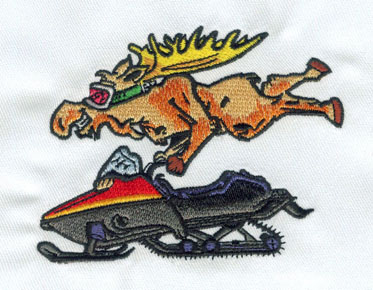The Chain Stitch: New Favorite Digitizing Embroidery Stitches Type
Embroidery is the art of stitching decorative designs on your clothes. If you get bored with the simple plain apparel, then embroidering your clothes can be a great way to give your attire an attractive and stylish appearance. Embroidery has plenty of different stitches that you can make to embellish your attires. For the best embroidery digitizing service, please feel free to contact us.
If
you are looking for some of the best embroidery stitches, you should certainly
look into chain stitches. It is one of the traditional and most famous
embroidery stitches. It comes from the category of circular stitches. You can
stitch it along a straight line or curve. You can use one or more variations of
the chain stitch simultaneously.
How to make an embroidery chain stitch?
When stitching, you can chain stitch by bringing the needle close to the thread. You will create a stitch loop around subsequent stitches, and each stitch will anchor the previous stitch. Although this is the basis for making chain stitches. Read on to discover the detailed steps for making it.
A
step-by-step guide to making chain embroidery
Chain stitch stitches are easy if you make them the right way. Regular practice is the key to mastering art. This is an easy step-by-step method to make -
Before you begin, you must know that there are two main ways to make it: standard chain stitching and reverse chain stitching. You have to start with small cotton cloth and move on to larger clothes as you fully learn
Step 1 - Prepare
If you are a beginner, you can mark the fabric with practice thread to avoid mistakes. To mark, use a pencil or water-soluble pen. Now adjust the fabric to the embroidery hoop. After that, thread the embroidered floss into the needle (about 12-14 inches). Make sure to tie a knot at the end to keep the form.
Step 2 - Start working straight
First, you must work from the back of the fabric and then bring it to the front of the production line. Please follow these steps - :
Take
the needle from behind the hole, from where the thread bud appears. Gently move
the tip away from the distance, but do not pull it up.
Now
place the work thread from behind and create a loop and pull the needle over
the loop.
Continue stitching and creating space between the stitches between the rings until you reach the end. Make a small anchored straight stitch from the end of the last loop to hold it in place.
Step 3 - Change the thread
In case you run out of thread, don't just end the thread with the anchor stitch and finally circulate. Follow these steps:
Bring
the needle down near the hole, from where the thread germinates, forming a loop
with the chain stitch. Make sure the rings are similar in size or slightly
larger.
Now,
the unanchored loop will be twisted from the surface so that it is on the
fabric surface. Create a tail from the first thread to the back on the error
side.
Now start weaving new threads from the back of the fabric. The stitch should appear where the next stitch begins and pass it through the unanchored loop.
You can also resize the loop by dragging the tail of the first thread.
Step
4 -- Treat the suture filling
Chain stitches need to be properly filled and can be created quickly with solid blocks. Splice several lines in the same direction and create a pattern texture from them. You can fill them horizontally or vertically as you like.
To make the chain stitch work as a filler, you need to keep multiple rows close to each other and ensure that the fabric does not appear.
Step 5 -- Make the reverse chain stitch
If
you use chain stitch regularly, you know that the whole string can pull out
accidentally and cause you problems. You can easily prevent it with reverse
chain stitching. To do this, you need to follow these steps:
The
needle is placed in front of the fabric and the production line begins to work.
Now
put it back in a straight line and make a small straight stitch along that
line.
You
need to remove the needle one stitch from the thread and insert it under the
straight needle. Continue stitching in the same way until you reach the end.
When you get to the finish line, you don't have to do anything special. Reverse
chain stitch can be used anywhere you want to use chain stitch.



